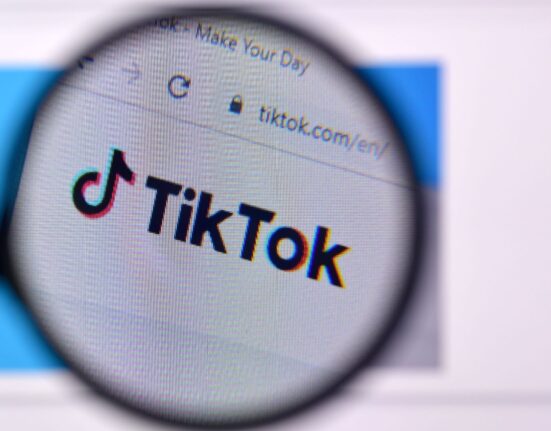In today’s fast-paced digital world, omnichannel marketing—connecting with consumers through multiple channels—remains a powerful strategy. It’s especially effective in keeping brands top of mind for consumers. Millennials, in particular, are loyal to brands and stores that provide exceptional, customer-focused experiences. To build a strong connection with customers, brands need to offer a seamless shopping experience across reliable platforms and support it with various channels for customer interactions.
A strong online presence is crucial. Brands must follow their customers throughout their shopping journey, knowing when to give a gentle nudge to encourage purchases. Consistently delivering a personalized experience across all channels is key to keeping customers engaged and loyal.
Rising Digital Expectations from Consumers
Consumers are becoming smarter with their money, and even younger generations are demanding a great digital experience. They want to feel confident about a product before considering a purchase, meaning businesses need to deliver high value not just in the product itself but in the overall shopping experience.
The challenge for businesses is to showcase and provide value while making customers feel valued. Knowing your customers well is crucial for not only meeting but exceeding their expectations, turning them into loyal customers. By analyzing customer information and purchase data, businesses can gain valuable insights into customer preferences and behavior, allowing them to tailor the shopping experience effectively.
Mobile Shopping Continues to Rise 📱
Mobile devices are playing an increasingly important role in eCommerce. M-commerce, or mobile commerce, is expected to keep growing in 2024. Last year, Shopify reported that 73% of Black Friday and Cyber Monday (BFCM) sales were made on mobile devices, compared to 27% on desktops. In the last quarter of 2022, mobile shopping accounted for 38% of overall digital spending in the US, up from 24% in 2017.
To tap into this market, businesses need to ensure their platforms are mobile-friendly. In the past, consumers often switched devices to make online purchases because mobile sites were hard to navigate. But with a mobile-responsive online store, businesses can offer a smooth shopping experience that keeps customers engaged on their smartphones.
Brand Value Beyond Economics 🌍
Consumers today are more conscious of their purchases. Market research shows a growing preference for products that are locally sourced, ethically produced, and carbon-neutral. There’s also an increasing interest in products that positively impact local communities. Consumers are more likely to support brands that give back to the community and practice sustainability rather than those solely focused on profit.
This trend is evident in “Anti-Black Friday” campaigns, popularized by brands like Patagonia, which highlight social issues and encourage consumers to avoid excessive consumerism. To appeal to these conscious-minded consumers, brands can incorporate a ‘social enterprise’ element into their promotions. However, this needs to be done with sincerity. Partnering with a charity or supporting a community must align with the brand’s values and be communicated thoughtfully, so it doesn’t come across as a gimmick.
Black Friday Is Going Global 🌍
Originally an American tradition following Thanksgiving, Black Friday has become a global phenomenon, partly due to the rise of eCommerce. In 2022, Shopify’s Black Friday and Cyber Monday sales saw significant revenue from countries like Canada and the UK, with London ranking as one of the top cities for BFCM shoppers worldwide. This presents a new opportunity for businesses outside the US to participate in Black Friday sales. It also highlights the need for brands to tailor their Black Friday deals to different regions.
Brands should ideally start preparing for Black Friday a year in advance, making it part of their annual marketing strategy. While the economy is slowly improving, it’s important to have backup plans in place, as surprises can still happen, as we learned from the pandemic.
Are Retailers Ready for 2024 Holiday Shopping? 🥳
By July, many retailers are already deep into preparations for the upcoming holiday shopping season—a crucial time for generating revenue and hitting annual sales targets. To gain insight into how they’re gearing up, a survey was conducted involving 23 online retailers, representing a diverse range of businesses with annual revenues spanning from $1 million to over $100 million. Employee numbers also vary widely, from just 1 to over 1,000👥, reflecting the different challenges and strategies that these retailers face as they prepare for the holidays.
A key focus during this time is inventory management. More than half of the surveyed retailers (57.14%) feel confident that they are well-prepared in terms of inventory. These retailers have likely been proactive in securing stock, ensuring they can meet the anticipated holiday demand. However, about half of the respondents are less certain about their inventory readiness. These retailers are heavily reliant on the supply chain and acknowledge that their inventory positions may remain uncertain until closer to the holidays.
Predictions for Consumer Shopping Behavior
More than half (53.85%) of the retailers expect two main trends this holiday season:
1. High inflation will likely lead to fewer purchases overall.
2. Consumers will compare shops more, which could lower conversion rates.
Nearly half (46.15%) believe consumers will shop more on marketplaces this year. Additionally, 15.38% expect that:
– July’s Prime Day will reduce shopping during the traditional holiday season (November and December).
– Consumers will focus their shopping even more on Amazon.
– Shoppers will buy earlier to avoid out-of-stock items.
The same percentage (15.38%) thinks that consumer behavior will be similar to previous years.
Expected Holiday Sales
Most retailers expect sales growth this holiday season:
– Over half (53.85%) expect sales to grow up to 24%.
– Smaller groups are more optimistic, with 7.69% expecting growth of 25% to 49% and another 7.69% expecting growth of 50% to 74%.
However, 7.69% expect their sales to decrease by 11% to 49%, and 15.38% expect their sales to remain flat.











Leave feedback about this